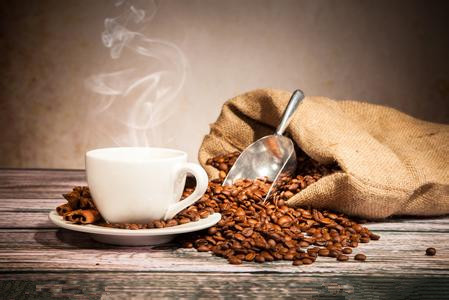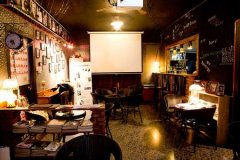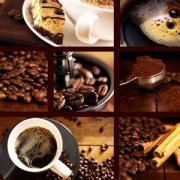Coffee is healthier than champagne

Champagne is a dreamy place of natural beauty. The name comes from the Latin words campus and campania or wilderness. In France, we used to use 'Champaign',' and now we use Champagne. According to documents, Pliny began to grow grapes in Man as early as 79 AD. Later developed into a vineyard by the Romans and created the art of wine-making, they built a wine cellar called crayeres on a chalky hillside more than three hundred feet deep, storing hundreds of champagne. In 92 AD, Emperor Tumishan ordered the grapes grown in most French vineyards to be removed to avoid competition with wine from the Italian peninsula, and the vines of Champagne were no exception. For centuries, the cultivation of grapes in champagne province was carried out in secret, until Emperor Probus abolished the original ban and ordered the vineyard to be redeveloped. Since then, wines from Champagne have been famous in Europe.
Until the late 17th century, only the wines of Burgundy were comparable to those of Champagne. Wines from Champagne Province are beginning to dominate export markets in lowland countries (the Netherlands, Belgium and Luxembourg), the traditional territory of Burgundy. By 1600, there was a war of words between Champagne and Burgundy, and the victors were doctors and poets who paid attention to taste and natural health. Winemakers in the province of Champagne began to look for and create a new type of wine, rather than imitating Burgundy. Vauterre commented that the new wine is not only unusual but also delicious after careful and painstaking cultivation. Its uniqueness and novelty cater to the trend of health fashion in Paris and are welcomed by the export market. Champagne winemakers have since mastered the technology of making light-colored champagne from Pinot Noir grapes.
Champagne red wine has been on the market in the UK for some time, but the new light pink wine Vin Gris was not introduced until the early 1660s. St. Everman, the flatterer of Louis XIV, was excluded because he was not favored by the king, so he fled to London, but soon became an English fashion advocate. St. Everman likes all champagne, and he ships it to the UK after buying the right amount of champagne, which makes champagne quickly become fashionable in the UK. The earliest records of bubbly champagne were also found in this period.
The early sparkling wine was accidentally invented by Fr è re Jean Oudart and Dom Pierre P é rignon. In France, most "vin gris" are fresh to drink. At that time, when it was barreled and shipped abroad, the warm climate in spring would cause the wine to ferment again on the way. Cork has been widely used in light beer in Britain through trade with Spain and Portugal, but this advanced method was not yet popular in France at that time. This new type of wine is bottled and preserved as soon as it arrives, which just adapts to the activity of bubbling. This phenomenon has aroused academic and business interest in champagne. The first successful technique of making "foam" in a bottle also benefited from the joint efforts of the monasteries of Pieri and Abbey. Under the guidance of professional winemakers in both places, Frres è re Jean Oudart (1654-1742) and Dom Pierre P é rignon (1639-1715) became the birthplaces of pure and perfect natural sparkling wine. The two monasteries are less than two miles apart and the two sides are likely to consult each other frequently. The champagne-making principles established by the two in the late 17th century are still very important today, including the method of mixing grapes from different vineyards to produce the perfect fine wine and the treatment of removing precipitates from the wine. and replace the original hemp cork with a wooden cork.
French monks were the first to make bottled sparkling wine. The method of making foam in bottles was invented jointly by monks and chief winemakers of Frres è re Jean Oudart and Dom Pierre P é rignon in France. The growing period of grapes in champagne province is relatively short, so the grapes need to be picked during the year, otherwise there is not enough time to ferment. Fermenting yeast converts sugar in grape juice into alcohol, but it stops fermenting when the temperature is low in winter. Monks invented the method of secondary fermentation to produce champagne, which was fermented in a bottle until the spring of the following year, and thus produced flavored champagne with carbonated bubbles.
In the following century and a half, this method of production basically did not make any progress. Grape growers in champagne province responded to the high demand for this sparkling wine, but no one dared to make a living because the production or reduction of bubbles in the wine was extremely unstable at the time. In 1834, Andr é Julien wrote in Wine and Topography that the reasons that affect the quality of foaming are strange and difficult to explain. The same kind of wine taken out on the same day, put into the same wine cellar and placed in the same place, some produce the same height, but the height of bubbles are in another location at the same time, and some have little or no bubbles at all, which door or under which air hole. All these uncertainties are so different and special that most experienced wine merchants cannot foresee and prevent them.
Another accident mentioned by Julien was the explosion of the wine bottle. Because of the accident, it is normal to lose 15%, 20% of the wine, sometimes more than 40%. The following two innovations did not solve the problem of cork flying off, but greatly improved the quality of champagne. Due to the northerly location of champagne province, the grapes lack enough light during the growth process, so the immature grapes make the wine taste very strong. The usual practice is to finally add sugar to the wine to soothe the wine to cater to the taste of the public's favorite sweet wine. Jean Antoine Chaptal, a famous chemist, advocated adding sugar to increase alcohol content during fermentation, rather than adding sugar to the finished wine, which proved to be beneficial. Later, Pamantier found that adding sugar made from concentrated grape juice was better than using sucrose. This discovery helps to improve the quality of wine, but aggravates the problem of bottle explosion. Due to the varying amount of sugar added, the bottle rupture rate was once as high as 80%.
Another milestone was in 1836, when a pharmacist from Chalons-sur-Marne, France, published a paper on bottled fermentation, which he described as r é-duction Fran ois after describing the method of measuring the remaining sugar in wine. It is known that wines made from ripe sweet grapes contain higher levels of alcohol and carbon dioxide, while the Fran ois method can determine how much sugar needs to be added to produce a specific volume of carbon dioxide and how much atmospheric pressure it produces in the bottle. This practice gave champagne a reliable degree, and after 1840, traditional non-sparkling wine production was almost completely eliminated in Champagne province because of its love of sparkling wine.
The champagne boom that followed lasted until the early 1990s. The taste of the connoisseur gradually tends to dry champagne, which coincides with the dated champagne made in 1842, 1846 and 1857 with only a small amount of syrup and of very good quality.
On December 17, 1908, the definition of champagne Viticole was officially recognized. It experienced three years of political struggle and civil unrest, and the resistance of grape growers reached its best in late 1911, which also led to the formulation of positive measures. At that time, the focus of the contradiction was on the import of cheap wine, which was transported by disreputable shippers from the sunny south to the champagne province and mixed with local champagne to deceive consumers. Growers and reputable shippers demand that these wines be sold separately from champagne. After that, trains of cheap wine and a large number of suspicious cellars were destroyed by the riots, which finally outlawed adulteration and stipulated that only grapes from the champagne province could be used to make champagne.
Important Notice :
前街咖啡 FrontStreet Coffee has moved to new addredd:
FrontStreet Coffee Address: 315,Donghua East Road,GuangZhou
Tel:020 38364473
- Prev

Drinking coffee is good for the skin. Coffee is healthy.
Our skin not only makes people feel beautiful, but also has many important functions, including protection, thermoregulation, immune response, biochemical synthesis, sensory contact (social and sexual communication). Specifically, the skin has the following functions: (1) to protect the body from bacteria and other foreign substances; (2) sensation: the skin can feel 5 different types of stimulation (touch).
- Next

Coffee is healthier than wine and beer.
Benjamin Franklin once said that God loves us and wants us to be happy. Beer proves it. Happiness? That's for sure. But what about health? In the past, there were no sanitary facilities and people did not know to protect the cleanliness of water sources. Infectious diseases caused by drinking water were widespread, but it was believed empirically that the disease was no longer prevalent when drinking fermented beverages such as beer and red wine. Because it is believed that alcohol is harmful to people.
Related
- Beginners will see the "Coffee pull flower" guide!
- What is the difference between ice blog purified milk and ordinary milk coffee?
- Why is the Philippines the largest producer of crops in Liberia?
- For coffee extraction, should the fine powder be retained?
- How does extracted espresso fill pressed powder? How much strength does it take to press the powder?
- How to make jasmine cold extract coffee? Is the jasmine + latte good?
- Will this little toy really make the coffee taste better? How does Lily Drip affect coffee extraction?
- Will the action of slapping the filter cup also affect coffee extraction?
- What's the difference between powder-to-water ratio and powder-to-liquid ratio?
- What is the Ethiopian local species? What does it have to do with Heirloom native species?

